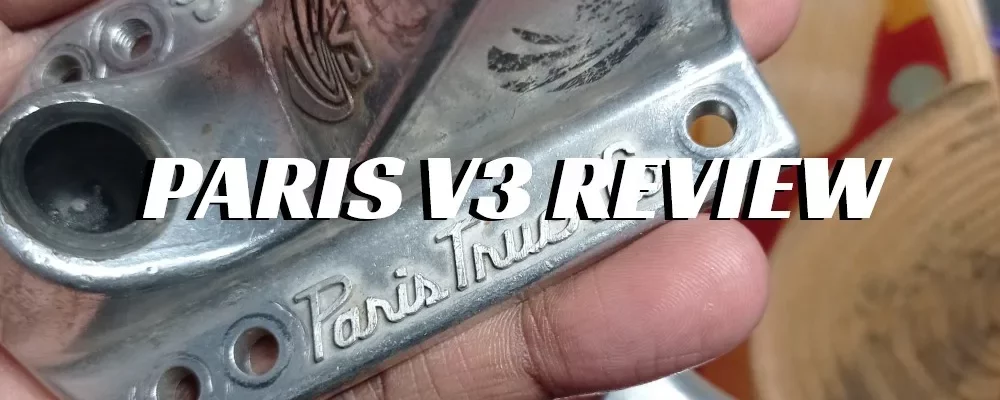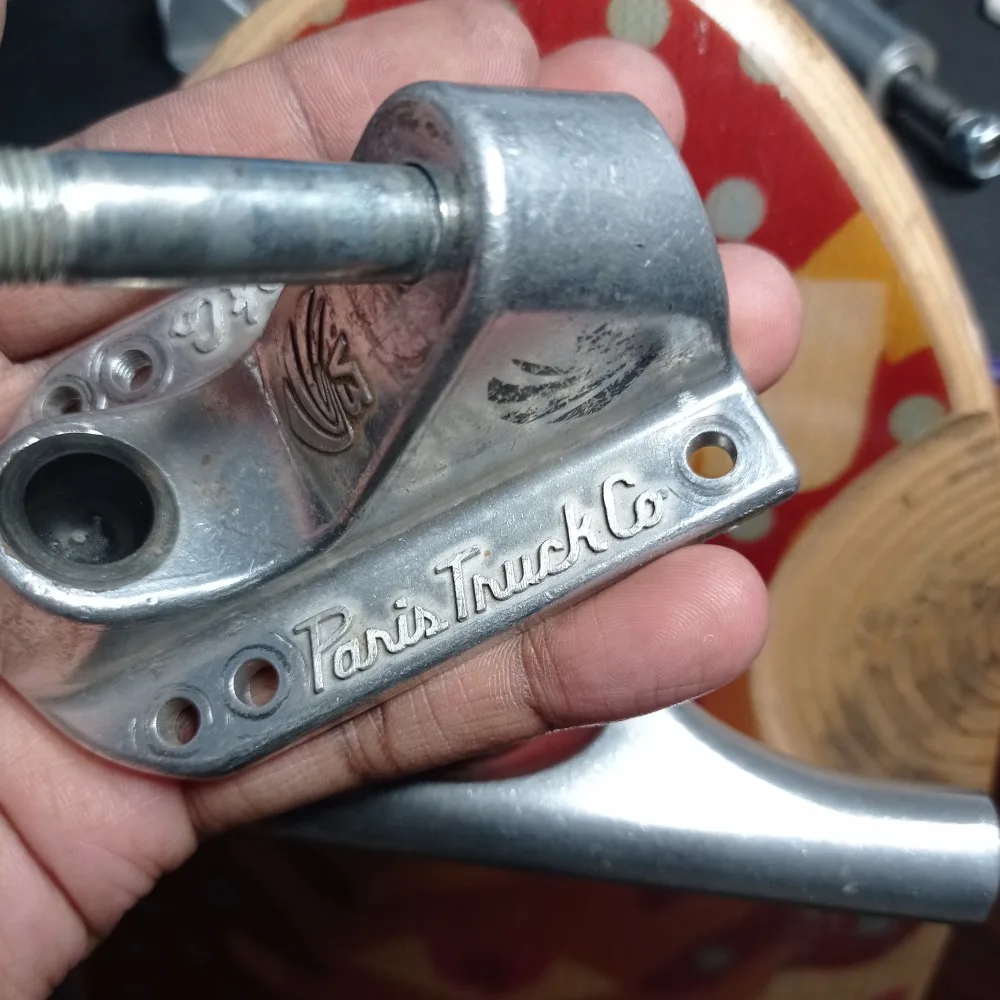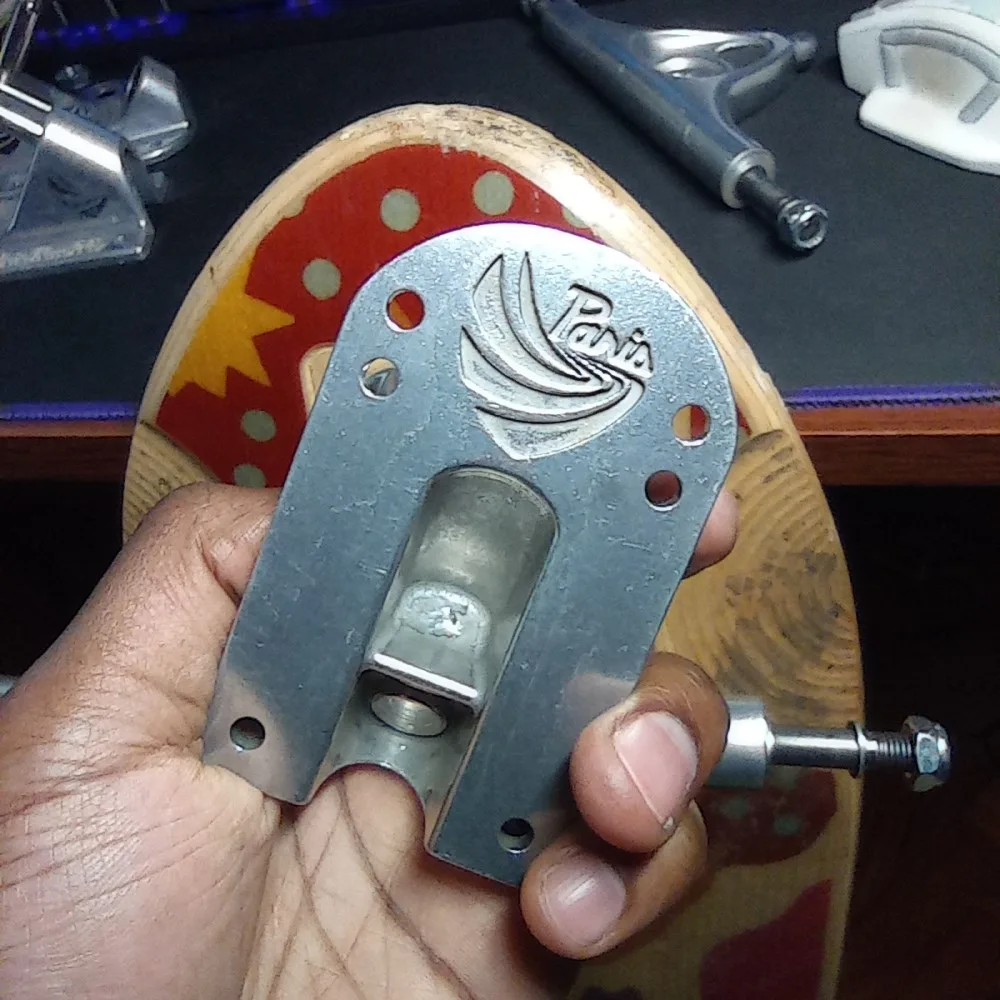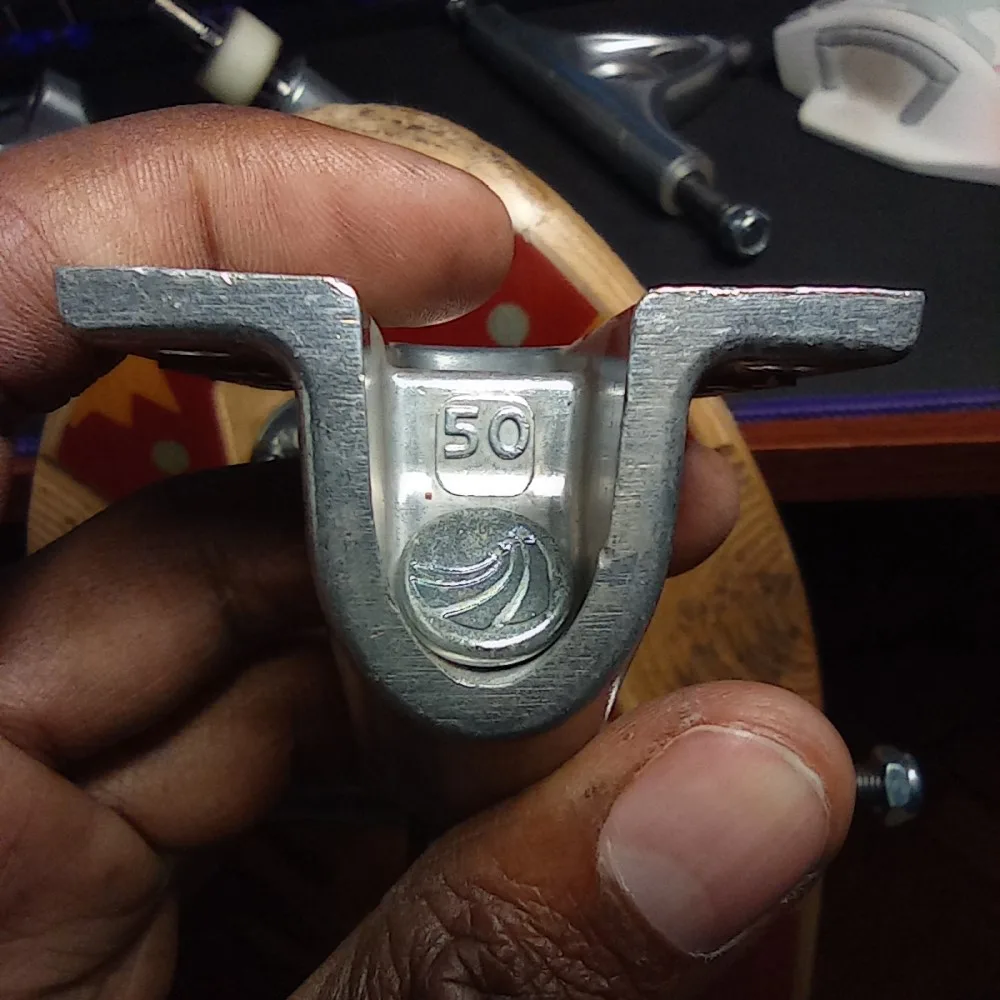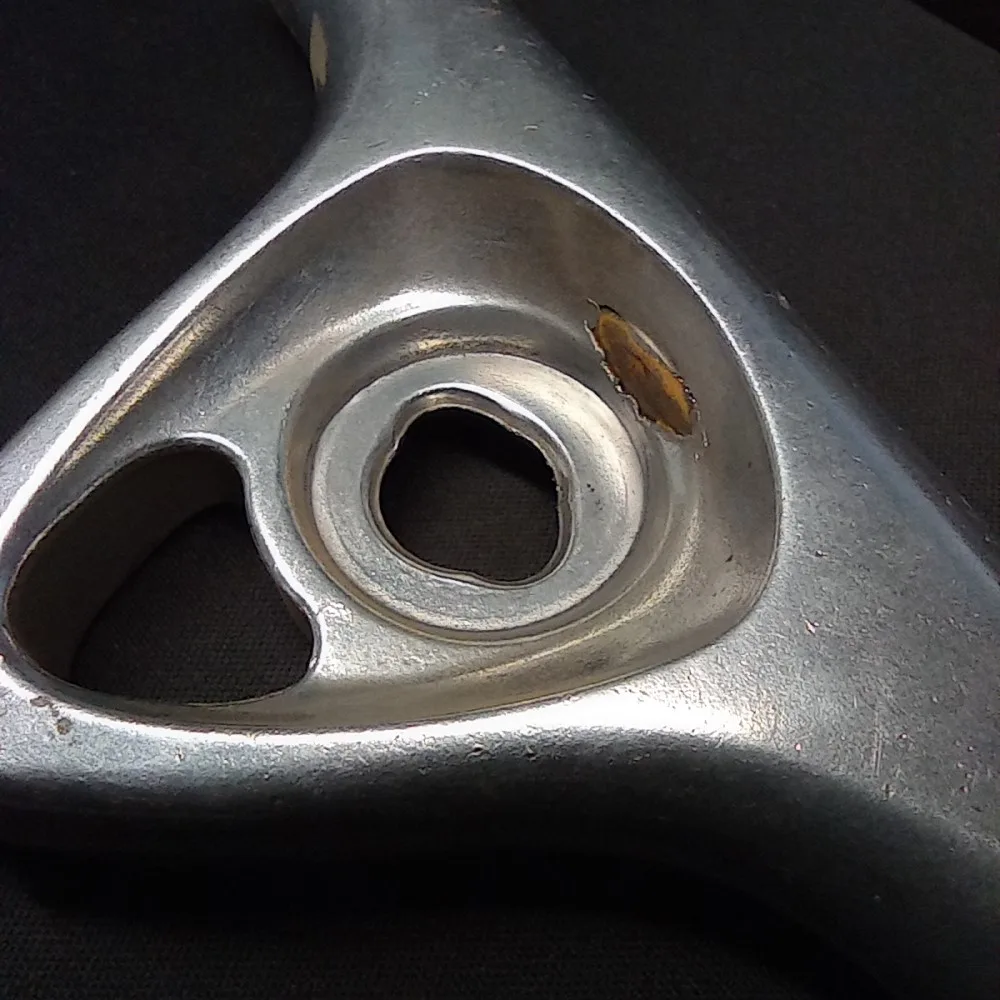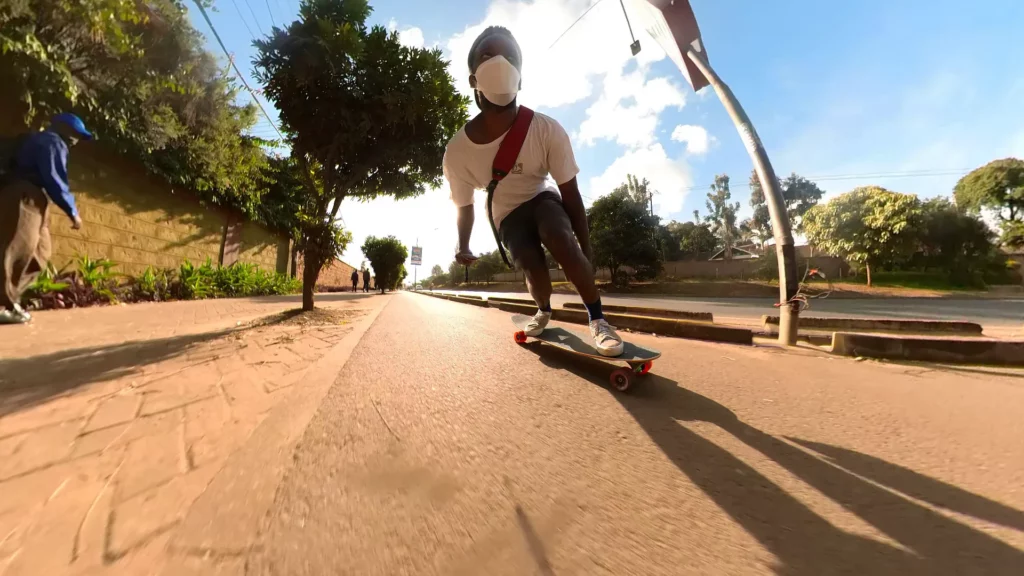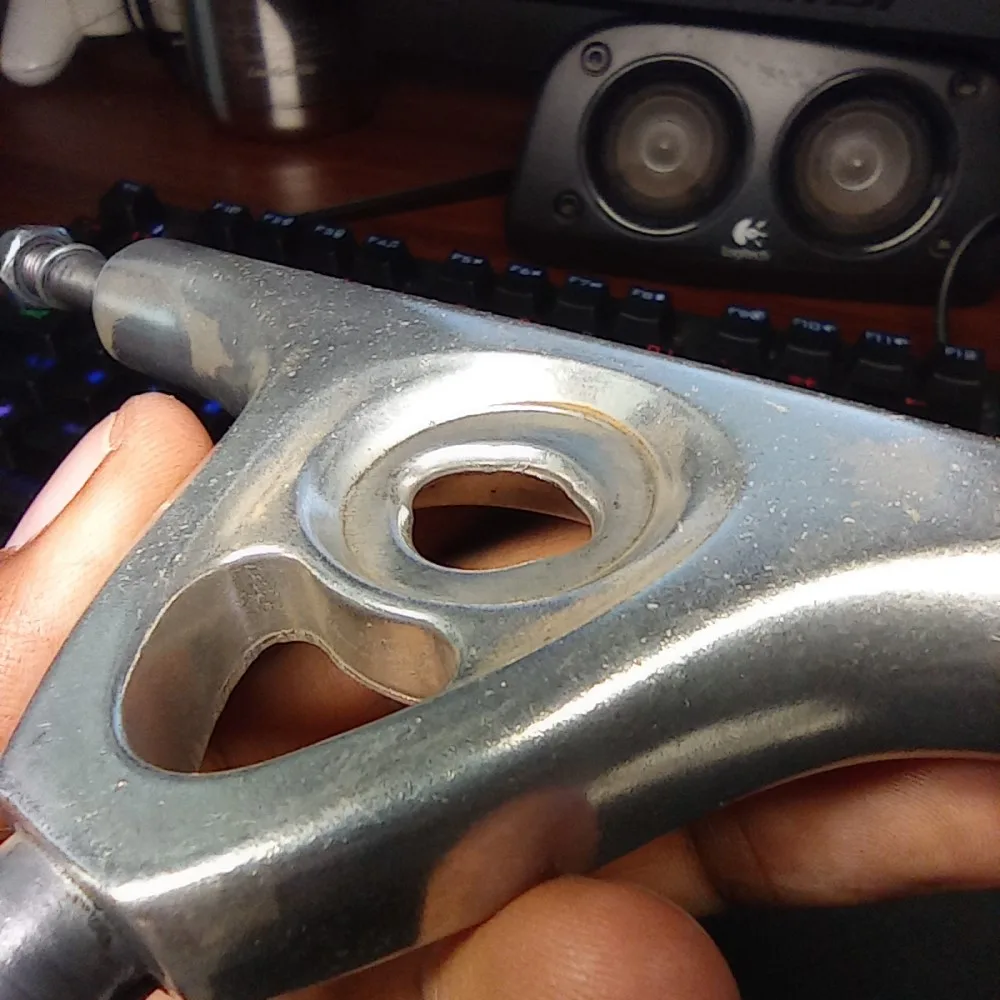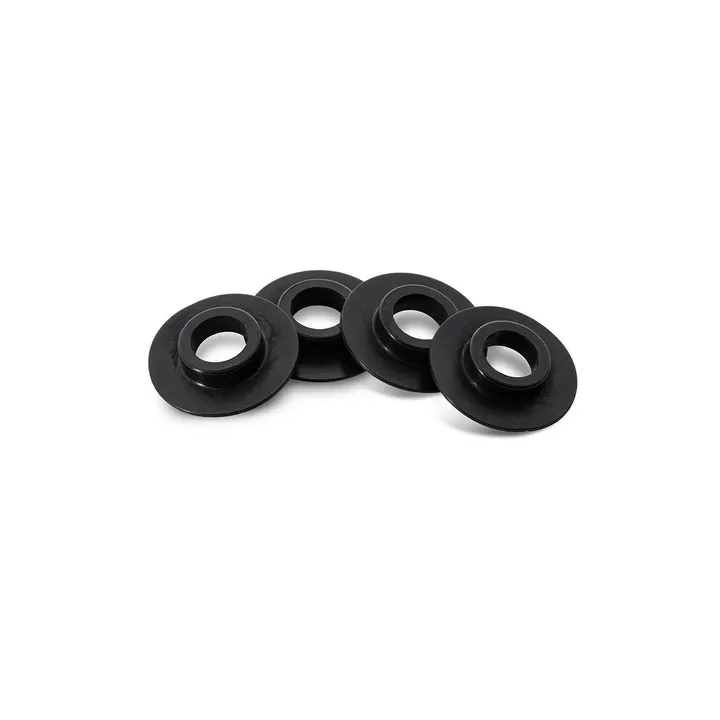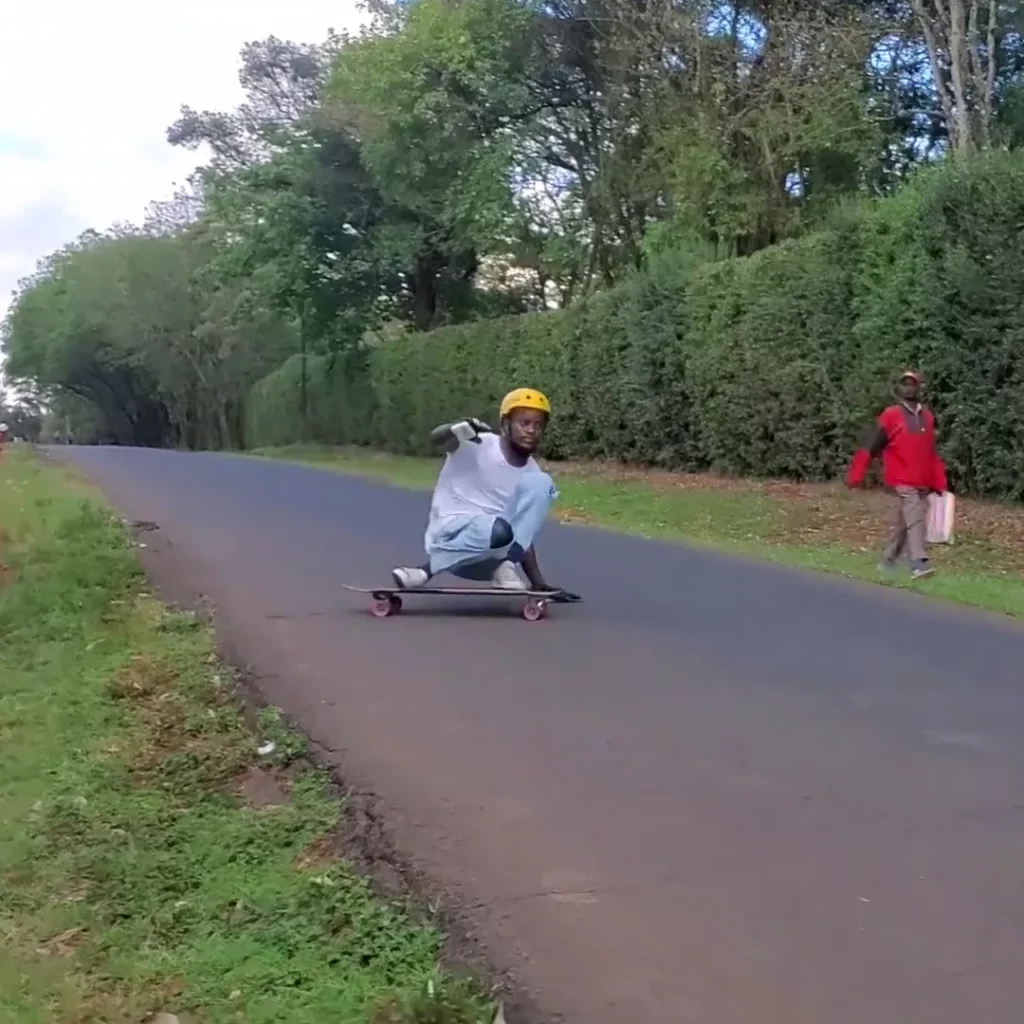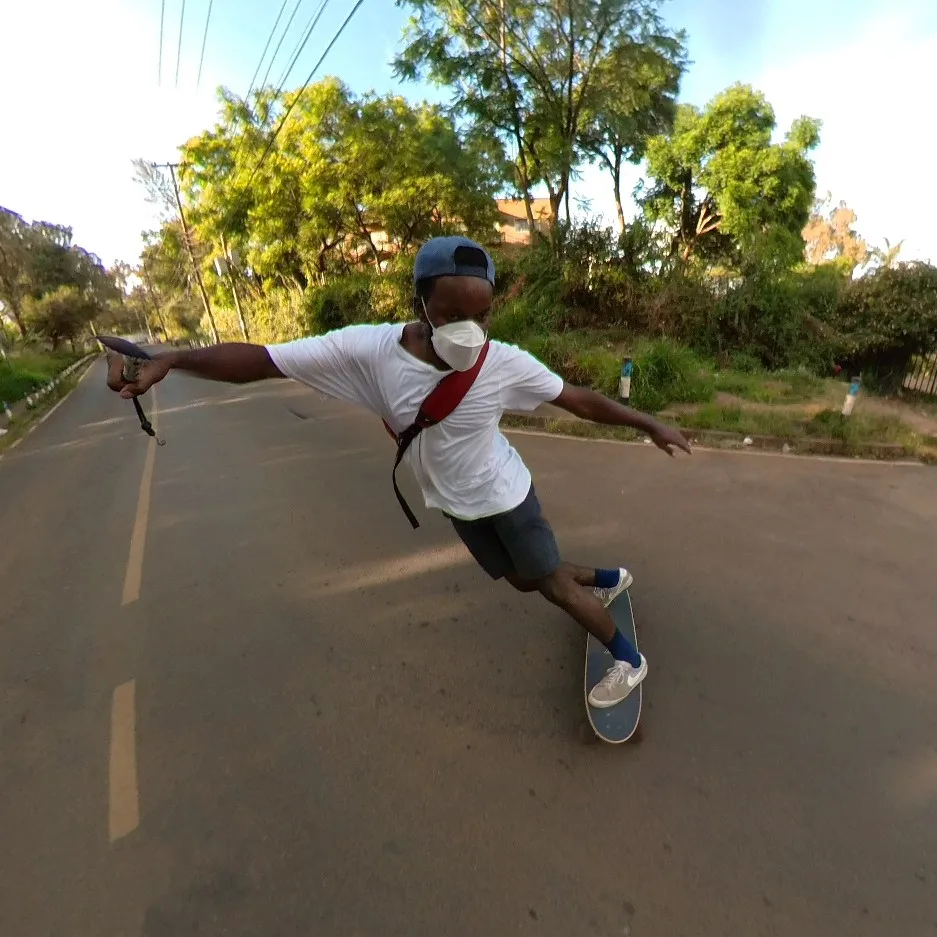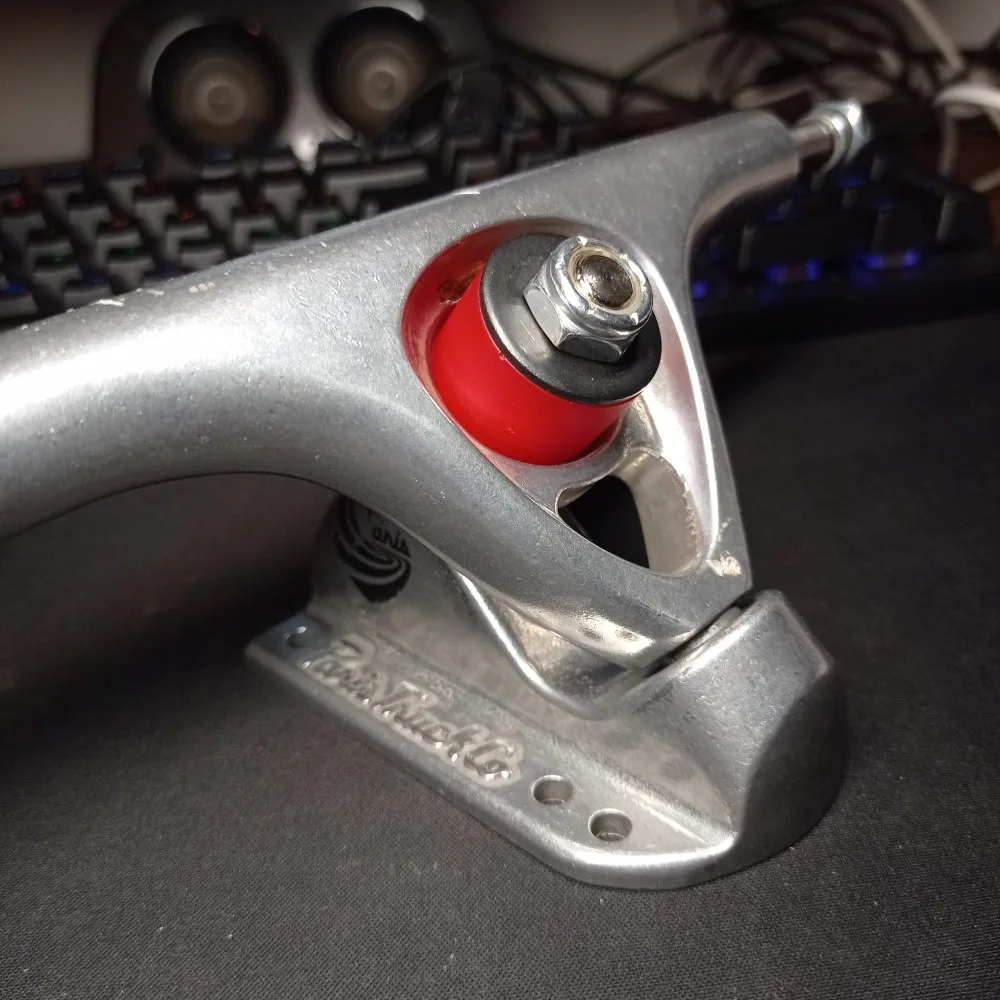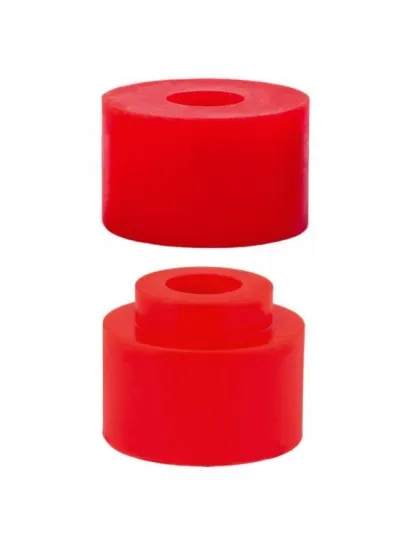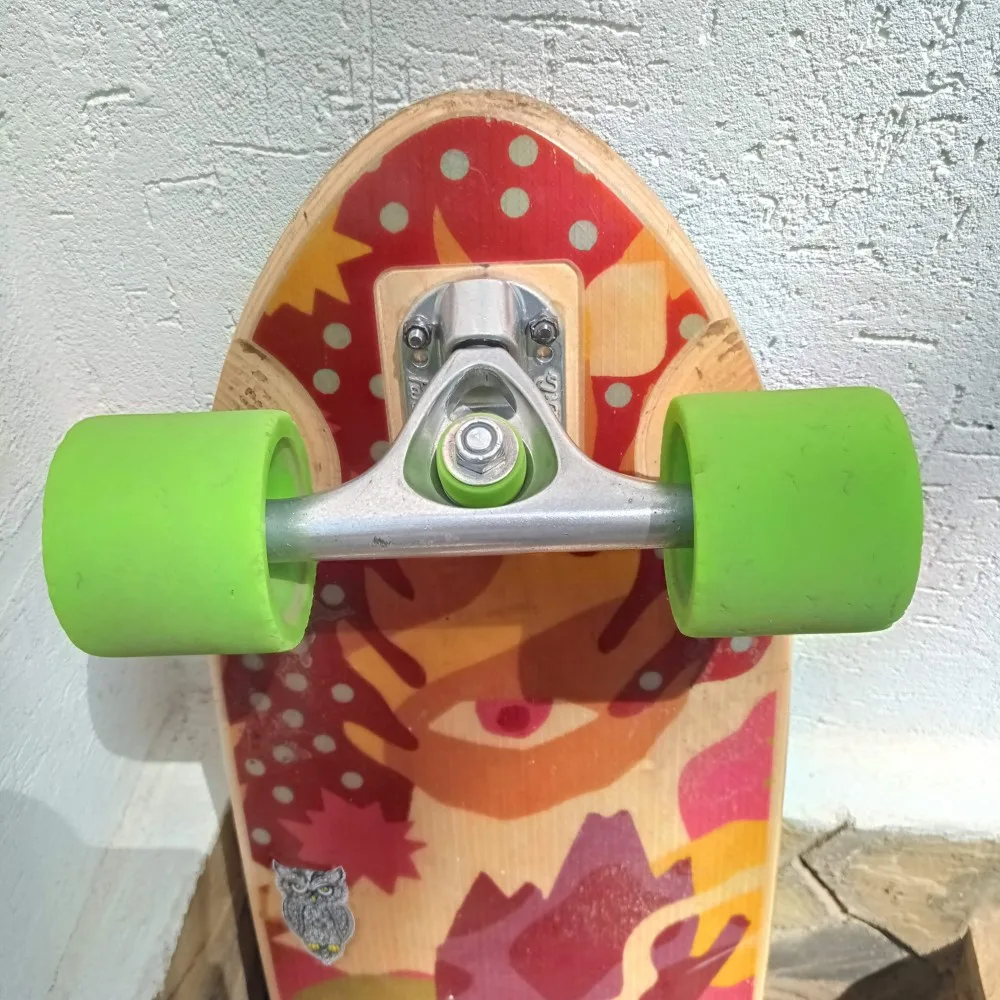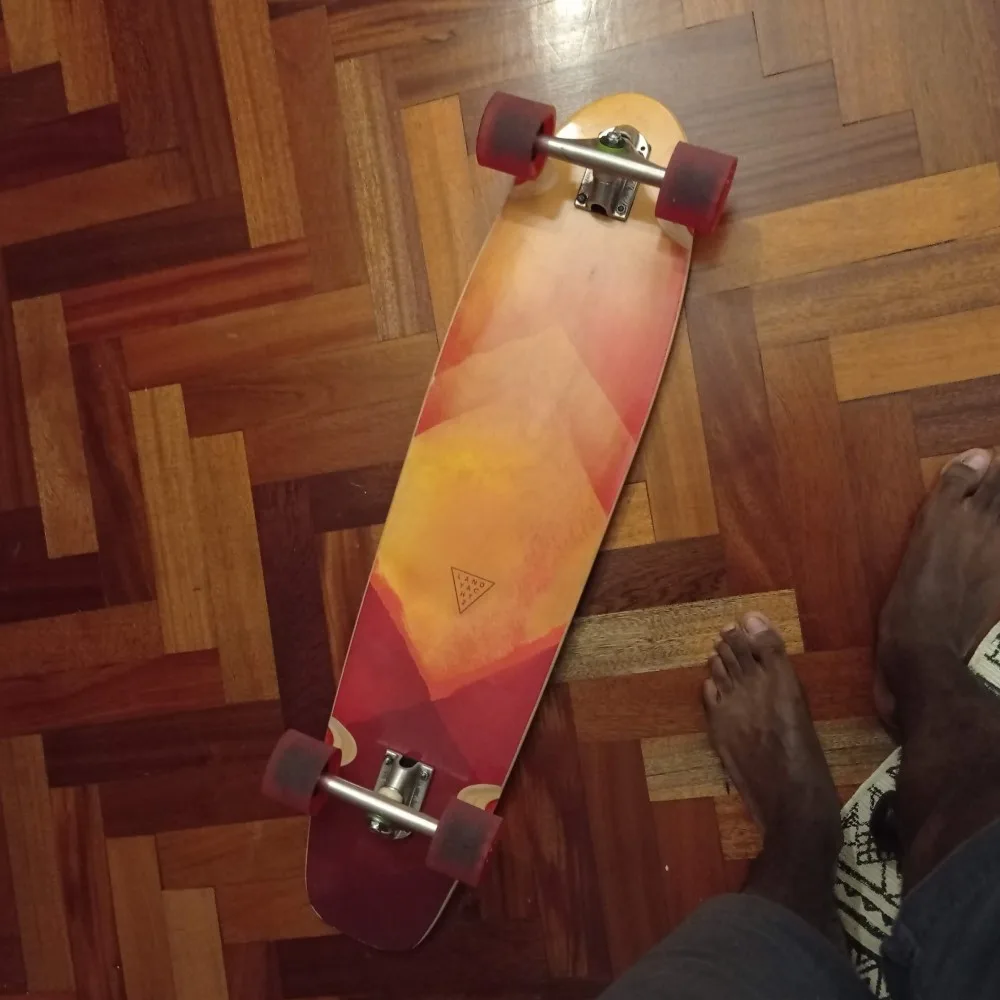Paris trucks are the Toyotas of the longboard world – strong, reliable, and affordable. The V1 and V2 trucks were popular options, but is the V3 any better? Let’s find out in my review.
Specs
- Baseplate angles: 50°, 43°
- Width: 150mm, 165mm, 180mm
- Construction: Cast Aluminium (proprietary alloy forming process)
- Rake: 2mm
- Cost: $58
- Upgrade bushings and urethane pivot
Paris V3 review
Summary
As far as cast trucks go, you can never go wrong with a Paris truck. In particular, these V3s turn good, feel smooth through the lean and turn, are stable, and are easy to control. They’re the definition of what a good truck is.
For cruising, dancing, freeride, and downhill the V3 will work incredibly well and get the job done well.
They work great out of the box, with a high-quality pivot and good bushings. Though I do recommend you replace the bushings with high-quality aftermarket ones as that will improve overall performance.
My biggest gripe with these trucks is they have no slop-stopping system. Though they work well, they do have a little bit of slop, and this slop makes them react more to road imperfections at speed, and gives you an inconsistent feeling at that edge of traction – they don’t feel consistent when you’re being super aggressive with getting them to slide.
For cruising, dancing, light/casual freeriding, and riding where you’re not pushing the limits, this isn’t an issue.
But yeah, I ultimately felt like my progression would be held back a little by this. They certainly allowed me to skate well, but they didn’t give me the same confidence trucks with slop-stopping systems would. I have to feather my input and be a bit careful sometimes. On these trucks, I would think twice about throwing a stand-up slide at super-fast speeds.
Altogether the Paris V3 are super high-quality cast trucks, and you can’t go wrong with them. And though I couldn’t be 100% comfortable on them, there are some people out there doing incredible things on these trucks. I highly recommend them.
Upgrades from V2
These feature a strong truck that has a better manufacturing process. It has a reinforced design for a stronger, but lighter truck.
It comes with height-matched baseplates – the 50* plate was taller than the 43* in the V2s.
I found the performance of these to be better than the V2. They felt smoother and a lot more controllable.
Finally, you now get a imprint on the baseplate telling you which baseplate angle you got, as well as a cool V3 imprint.
How do they turn?
They turn quickly, but they quickly tap out of turn. They have a progressively tight bushing seat, and it allows the truck to turn quickly initially, but then quickly restricts that turn.
It allows for a fun, quick-turning, and diving truck.
The bushing seat also allows for a controllable and smooth turn and lean. You get more resistance progressively as you engage the bushing.
However, with the quick restriction to the turn, these get to that edge of lean and traction fairly quickly. They do want to slide when they get to that edge.
That said, you’re never really going to want more turning from these truck IMO. That quick lean and dive is enough to get your around all corners and is necessary to provide an end to the turn and lean.
How do they lean?
The Paris V3 has a good amount of lean. They don’t lean too much, just a good amount. Hard to describe it another way …
But like the turning, the lean is relatively short. But not too short, or rather doesn’t come to an end suddenly. The lean is quick but you get to that edge progressively.
The dished bushing seat loads up on the bushing well, and it’s super easy to hold a turn/degree of lean with these trucks.
Are they stable?
Yeah, they are quite stable. They have a surprisingly strong center.
I think the center is added to by the fact you have to preload and squish your bushings a little bit to make the nut fit on the kingpin flush. I wonder if this was by design ….
Yeah, the trucks are stable and it is quite easy to keep them going in a straight line.
How do they feel over road imperfections?
Over road imperfections, these trucks do quite well. However, they don’t do as well as trucks that have slop-stopping systems and/or have aid returning the hanger to center.
These react a tiny bit more to road imperfections before returning to center.
This isn’t a big deal at slower speeds, but when you’re hucking it, it can reduce your confidence a bit.
You can do this to reduce that effect
In the past, I used to skate all my Paris trucks with a homemade 95a insert. This insert reduced slop added a bit of center, kept the hanger on the right plane, and reduced how reactive the truck was to road imperfections. It also gave it a more direct feel to the input.
If you want to skate Paris trucks and want the best performance out of them, the insert might be a good shout.
Some people also use Hardcore barrels from Bones, or Magnum bushings from Riptide. The Magnums are a bit wider than standard bushings, but they fit in the Paris bushings seat better. Though I’ve never skated them, I believe they reduce slop and overall improve the performance of the trucks, similar to the insert above. The Hardcores reduce slop a little thanks to their plastic insert. Worth trying.
Finally, some people run much harder bushings in their trucks and/or cupped washer. The cupped washer help control the edge of lean better. Should help you when trying to do standies.
Are the Paris V3 trucks good for sliding? Do they slide well?
Yeah they do, they slide well. They’re easy to kick out into the slide when you get to that edge of traction/lean described above. However.
I had an issue with this…
However, if you’re aggressive about getting them to that edge of traction to get them to slide, they can feel a bit inconsistent. This wasn’t an issue for hands-down riding, but it was an issue for me with stand-up slides.
Sometimes the truck would articulate a tiny bit more than I expected on initiation, or feel inconsistent in the stand-up slide, and this would make me feel unconfident about going fast and doing stand-up slides.
I didn’t have this issue on precision trucks and other cast trucks with a slop-stopping system – it wasn’t an issue on Savants if I used the insert bushings.
I also had the same issue on Paris V2s, Cal IIs, etc. …
If I feather them towards that edge of traction, this issue kinda goes away. But it makes me feel held back a little it.
I just want to highlight again, this isn’t an issue for hands-down riding. At all. You can be aggressive as a MF and they still do well.
The biggest weakness
I believe this is these trucks’ biggest weakness.
They’ll be ok to ride on, do well for all sorts of skill levels, but when you’re trying to push your riding and get to the top level of freeriding and DH, I think they will hold you back a bit – mostly with standies.
There are certainly riders who kill it on these trucks, but I don’t think everyone can have a high skill level on them.
I do think if you use Riptide Magnums, Hardcore barrels or a homemade insert, you can mitigate this issue a little bit.
Are Paris trucks good for dancing (and freestyle)?
Yeah. Some of the best dancers use Paris trucks.
They lean and turn smoothly, what more could you want? They’re also super strong thanks to their construction, so they will hold up to abuse and slams.
You can’t go wrong with them as an option.
Are they durable?
I’ve heard mixed reviews from others, but I do think they’re durable. You may have to replace the pivot cups after a couple of months of hard riding, but the hangers should hold up to the test of time.
Also, Paris has a lifetime warranty. If you bend your trucks or mess up when skating, they will replace em.
Do they come with great stock parts?
Yes, they do. The urethane bushings and pivot are high-quality. However, you may want to replace the bushings with after-market ones suited to your weight.
Though the stock bushings are 90a, they can feel a bit stiff or soft depending on your weight.
I found the stock pivot to work super well.
What I didn’t like?
There’s not a lot I didn’t like. The whole no slop-stopping system kinda sucks, but it isn’t that big a deal TBH. This is a cast truck after all.
But I’d be surprised in the future if Paris doesn’t adopt a plug barrel system like Caliber and Bear. I would be really surprised.
What really sucked is I’d sometimes have trouble making the bushing seat in the hanger. The geometry is so tight that if the bottom washer was slightly too thick or a bushing was slightly too big, it wouldn’t be easy to make everything fit. But this was only an issue on the old Paris V3 I had. The more recent ones I’ve purchased have a different pivot and this isn’t an issue. I wonder if Paris updated the pivot because of this …
Where to buy the Paris V3?
You can buy the Paris V3 here on Amazon.com.
You can also buy the Paris V3 here at the Stoked rideshop.com.
Some thoughts …
I’ve skated every iteration of Paris RKPs available. I tell you, these V3 are something special. Paris did the thing.
They’re good enough that I don’t have the urge to get a truck like Savants … and that’s saying something.
And though I have an issue with that one particular thing, I look forward to whatever solution they have for this in the future. They have a great truck and I want to see them develop it more and more.
And if it were not for the advancements made by Bear and Caliber for their Gen 6 and Caliber III trucks respectively, I would here saying that the V3 are the best cast trucks ever. But bro, Caliber and Bear did the thing.
Stoked to have my set of V3s, I don’t think I’m gonna let them go.
My Pairs V3 setups
Setup 1
- Deck: Landyachtz Freedive
- Trucks: Paris V3
- Hanger width: 150mm
- Baseplate angles: 50/35
- Front truck
- 81a/85a Venom HPF barrels
- Flat washers
- Back truck (Randal 35* BP)
- 93a/95a Venom HPF barrels
- Flat washer BS, Cupped Washer RS
- Wheels: Various
Setup 2
- Deck: Landyachtz Ripper
- Trucks: Paris V3
- Hanger width: 150mm
- Baseplate angles: 50/50
- Front truck
- 85a Hardcore barrels
- Flat washers
- Back truck
- 85a Hardcore barrels
- Flat washers
- Wheels: Supreme Hawgs
Also, these trucks are Randal compatible
Don’t forget, these trucks are also Randal compatible. They share geometry with a ton of other cast trucks on the market.
This means they can use another truck’s baseplate. More info on Randal compatibility here.
This is why I’m able to use the 35* Randal baseplate in my setups above.
Also, if you’re looking for a low-angle rear, Boardnamics makes adjustable baseplates and low-angle baseplates for Randal compatible trucks. Check them out here.
Have you enjoyed this review of the Paris V3?
And there you have it. I hope y’all enjoyed this review and found it insightful.
Big thanks to all my patrons for the support – David, Squirrels Adventures, Mike, Jed, Mowgii, Jan, Josh, Jay, Jay, Bryan, @owencampbell777, @dkwan, Alex, Kasajja, Domnik, Reuben, @pablo.vega.andrade, Vlad, Asa, Helge, DeLacoste, Peder, Josh, Mike, Anthony, @issishreds, Greg, Jackson, Slipa, Louisa, Bill, Steve, Brain, John, Austin, @bomber_p_, Brian, Jeffrey, Jules, Henry, Austin, Philip, and Justin. I couldn’t write articles like this without you guys’ support.
